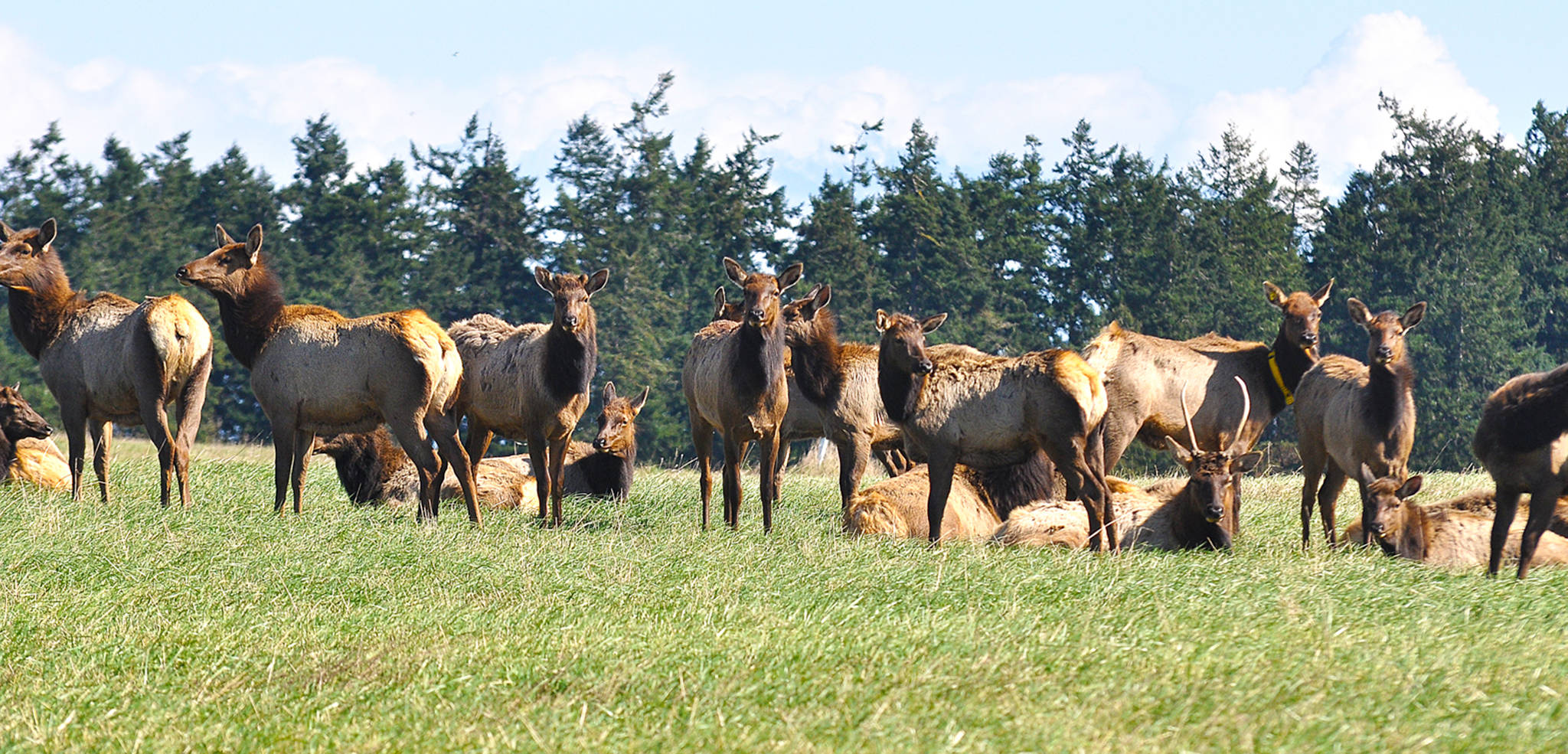SEQUIM — Sequim’s Roosevelt Elk herd is once again being thinned because its numbers are too high and they are badly impacting local crops, according to the state Department of Fish and Wildlife.
Last week, a local resident captured a photo of an elk being killed on private property — and the killing was later revealed to be a legal action by the property owner through a state damage prevention permit.
Brian Calkins, Department of Fish and Wildlife Region 6 wildlife program manager, said the herd now has about 40 elk. Their number will be brought down to about 25, depending upon the agricultural damage they inflict.
“The number of permits we issue isn’t directly tied to bringing population down. It’s more about the amount of damage the land owners are experiencing,” Calkins said.
“We want to do the minimum amount of harvesting without reducing their numbers too low.”
In recent years, area farmers reported tens of thousands of dollars in damage to local crops from the elk.
This year, the state has agreements with four agricultural producers and has issued six damage prevention permits in the Sequim area to control the elk population, Calkins said.
Calkins reports four elk have been killed under the permits.
Farmers typically work with a state wildlife conflict specialist, Calkins said, to determine the best course of action for thinning the herd.
He said farmers are typically allowed to only take cows or antler-less elk but in Sequim some bulls have been killed due to their higher number compared to cows.
About a decade ago, the herd grew to nearly 100 elk and former Fish and Wildlife staff reported that if left alone they could cause “an incredible amount of agricultural damage” and grow exponentially due to not having natural predators.
That led to nearly 50 elk being harvested in one year, Fish and Wildlife staff reported.
“[The Sequim group of elk] are appreciated by many folks in the community but they do cause a lot of agricultural damage in the area,” Calkins said.
“Through a lot of interaction with public and land owners we’ve arrived that there are too many elk [today].”
Killing elk though, Calkins said, is considered a last resort.
“We always prefer nonlethal deterrents first, [i.e.] noise, or in extreme cases fences, but it’s very expensive,” he said.
“We do find with hazing, or scare tactics, that after a period of time animals become accustomed to it and it becomes less effective. It’s more effective when harvesting a few [animals] along with hazing.”
In the past 10 years, Fish and Wildlife staff report Sequim’s situation has become more manageable for land owners. However, Sequim’s situation isn’t unique in allowing harvesting, Calkins said.
“We work with landowners all over the state with deer and elk damage issues,” he said.
On the Olympic Peninsula, Calkins said the state is working with landowners in Forks when elk come into town and in less populated areas of the West End as well as on the southern edge of the Olympic Mountains.
Wildlife conflict specialists also help land owners manage other animals such as deer, bats and raccoons.
However, Calkins said they “put in a tremendous amount of work every year dealing with land owners and the damage they incur from the elk.”
Calkins said his department is given direction by the state Legislature to assist landowners and sometimes landowners receive compensation under certain conditions depending on the damage evoked from wildlife.
To reach the state Department of Fish and Wildlife Region 6 office, call 360-249-4628 or visit https://wdfw.wa.gov. Region 6 includes eight counties including Clallam, Jefferson, Kitsap, Mason, Pierce, Thurston, Grays Harbor and Pacific Counties.
________
Matthew Nash is a reporter with the Olympic Peninsula News Group, which is composed of Sound Publishing newspapers Peninsula Daily News, Sequim Gazette and Forks Forum. Reach him at mnash@sequimgazette.com.

